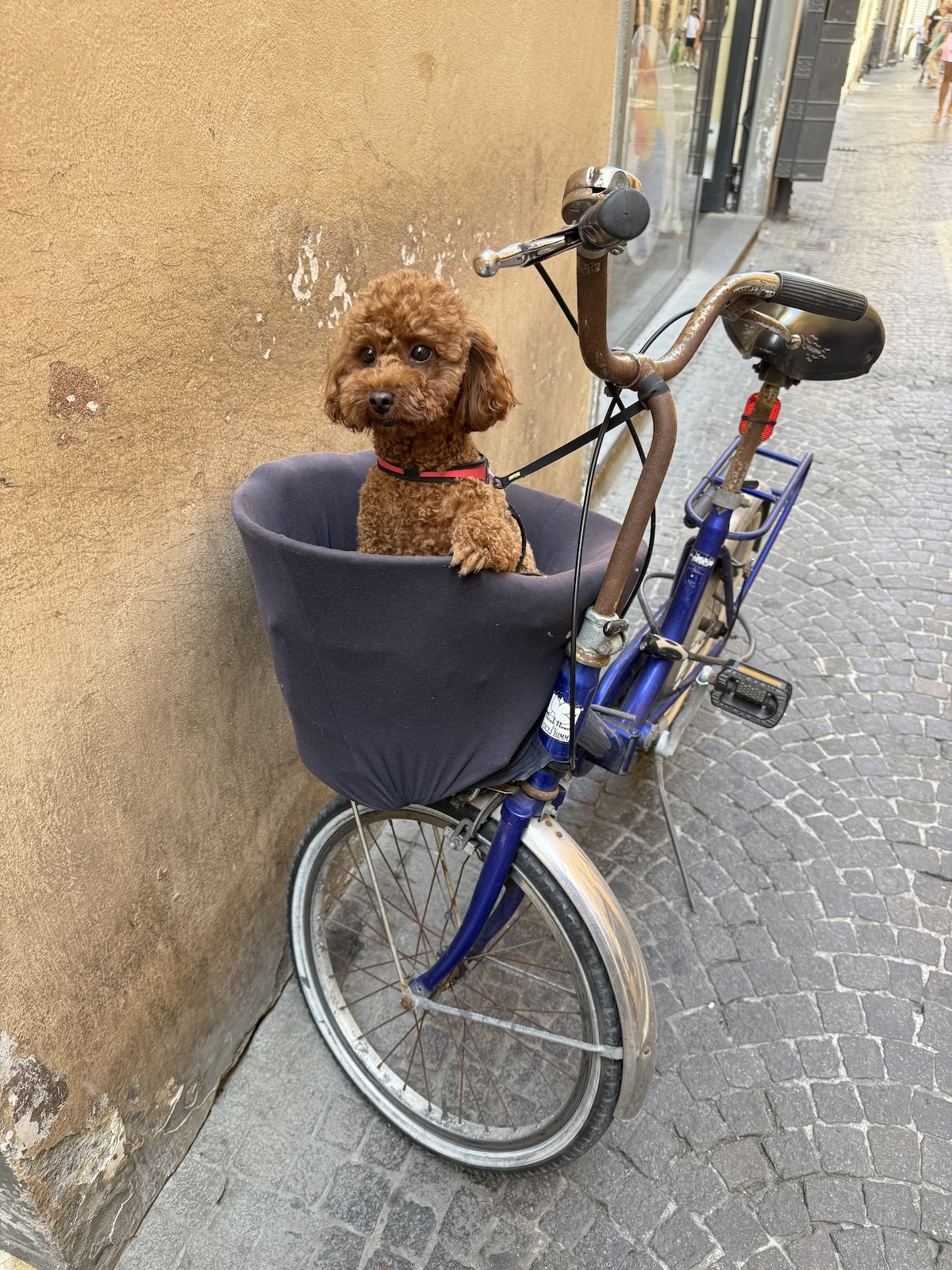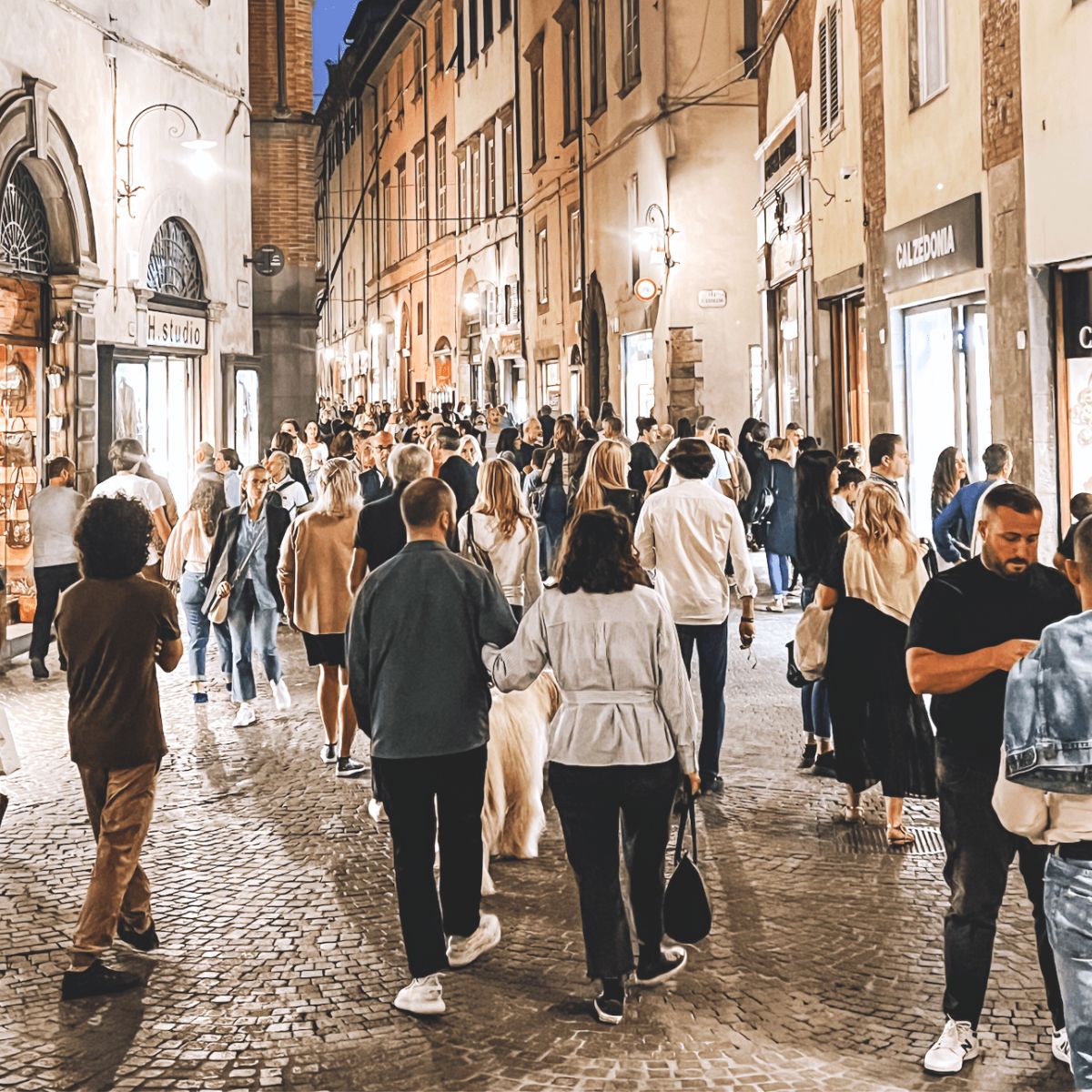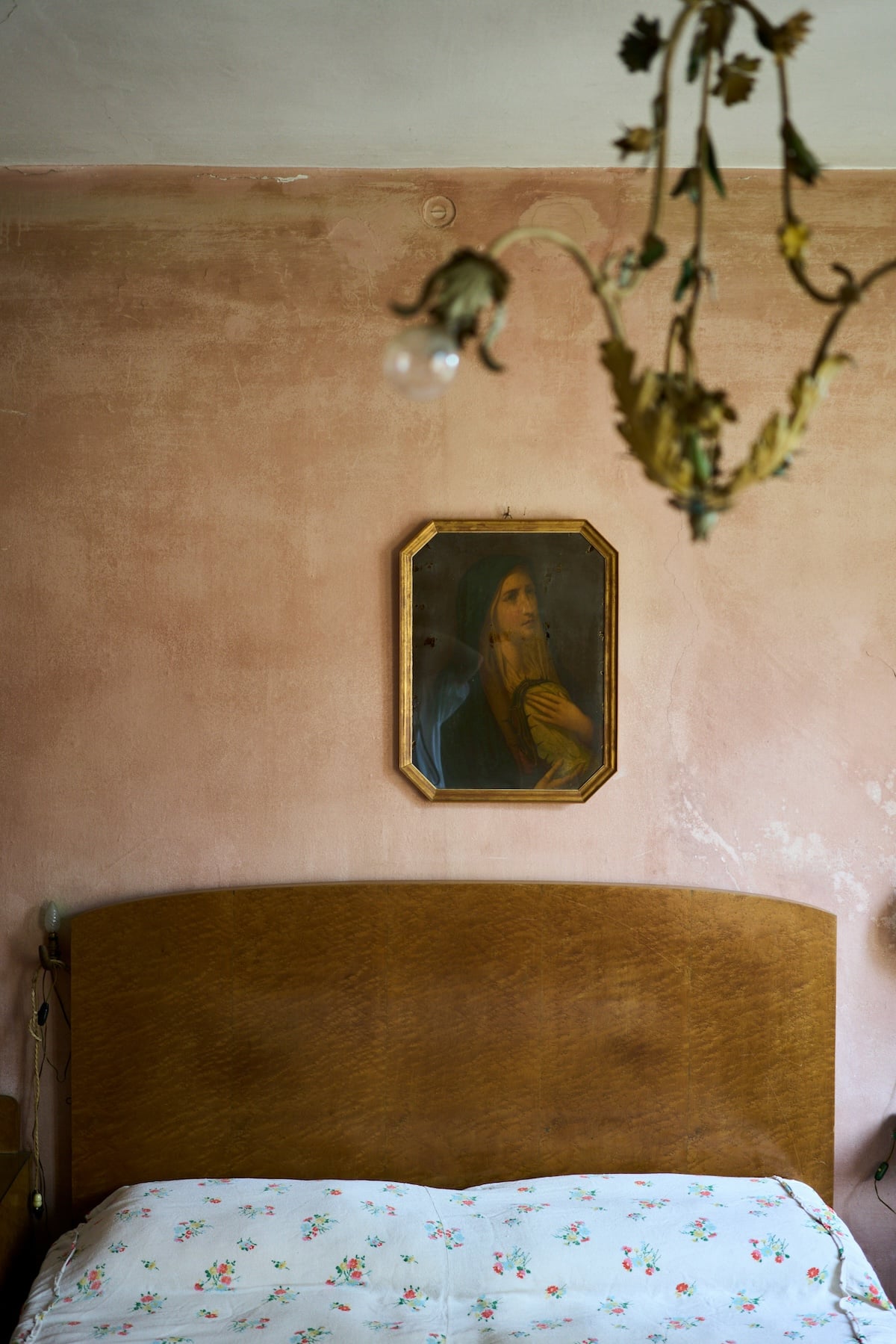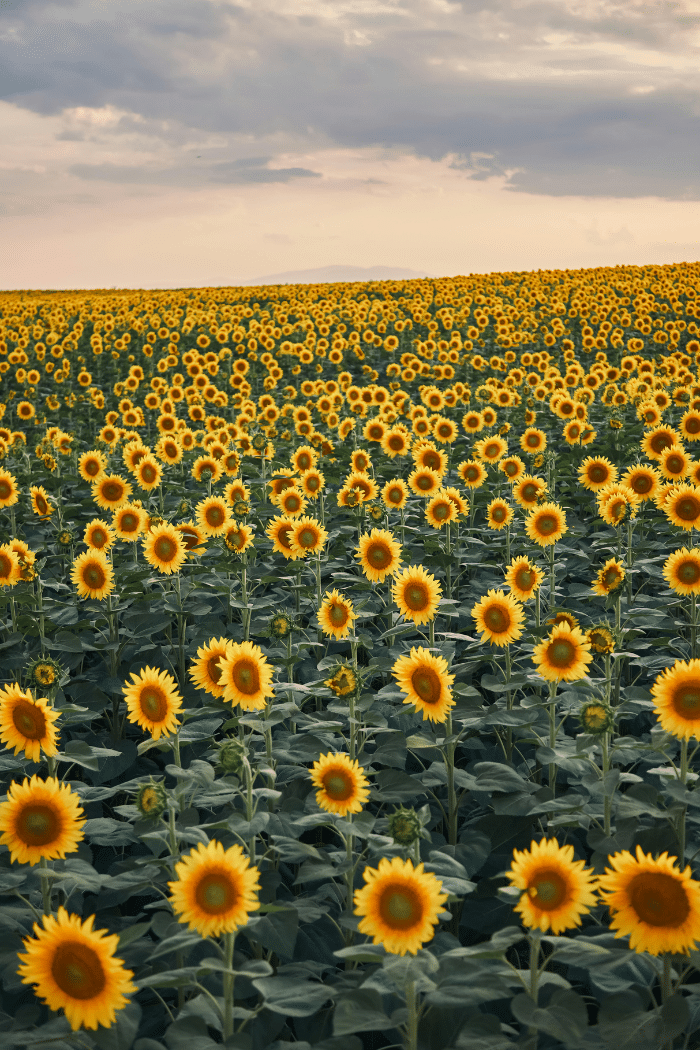
Northern vs Central vs Southern Italy. How does a traveler choose?
Italy isn’t one place. It’s many.
Each region feels different in ways that surprise a lot of travelers. The food changes. The daily rhythm changes. Even the way people drive or greet you can feel different.
That’s because for most of its history, Italy wasn’t one country. It was a mix of independent states, each with its own culture and outside influences. That history shaped the Italy you experience today.
This guide breaks it down simply: North, Central, and South.
You’ll see how each region feels, what kind of food to expect, how the pace of life shifts, and what kind of trip each area offers.
If you’re deciding where to go, this will help you match your destination to your interests, style, and budget.
PACE OF LIFE AND ATMOSPHERE

Northern Italy
Life in the north moves fast. Cities like Milan and Turin focus on business. Things run on time. People dress sharp and stick to schedules. There’s less small talk and more forward motion.
But that doesn’t mean people don’t enjoy life. Aperitivo—an early evening drink with small snacks—is part of the daily routine. Lunch breaks are real breaks. On weekends, locals might head to the lakes or the mountains. There’s a rhythm here—a balance between work and time off—but the overall pace is quicker and more organized than the rest of the country.
As a traveler, you’ll feel it right away. Trains are reliable. Service is prompt. You can cover a lot of ground in a short amount of time.
Central Italy
Central Italy moves at a steady pace. Not rushed, but not slow either. People take their time. They sit down for lunch. They chat over coffee. They stroll through town instead of rushing from place to place.
Rome and Florence feel busier in the summer, but you’ll still find quiet moments, especially early in the morning or in the evening after daytrippers are gone. In smaller towns, life slows down even more, especially during the afternoon pausa, Italy’s midday break when shops and restaurants in smaller towns often close for a few hours, usually from around 1 to 4 p.m., so people can rest, eat, or spend time with family.
Southern Italy
In the south, time stretches. Meals run long. Shops close in the afternoon. Conversations linger. Schedules matter less than people do. Sunday lunch isn’t optional—it’s sacred. You won’t find much rushing here. Life flows at its own pace, and that pace is slower.
Dinner might not start until 9 pm. You might have to wait for a store to reopen after pausa. But once you let go of the need to hurry, it all starts to make sense. This rhythm isn’t just different, it’s part of what makes the south feel alive.
FOOD AND CUISINE

Northern Italy
The food in northern Italy is rich and comforting. You’ll see more butter, cream, and cheese here than in the rest of the country. Meals often reflect the colder weather and Alpine influence.
Risotto is a staple, especially in places like Milan. In the mountains, meals are hearty. Polenta gets served with slow-cooked meat. Buckwheat pasta shows up on menus. In Trentino-Alto Adige, sausages, dumplings, and apple strudel reflect the region’s Austrian roots.
This region is also known for its wines. Piedmont produces Barolo and Barbaresco. Veneto is home to Amarone and Prosecco. Wine here is serious, and the quality is high.
Central Italy
Central Italy is known for simple meals made with great ingredients. This is where pasta really shines. In Rome, you’ll find cacio e pepe, carbonara, and amatriciana. In Tuscany, look for pici with garlic sauce, vegetable soups like ribollita, and thick steaks cooked rare.
Olive oil is the base of most dishes. Meals are often seasonal and tied to the land. Fresh bread, local cheese, and homemade wine are part of everyday life in smaller towns.
The wine here is world-famous. Chianti Classico, Brunello di Montalcino, and Super Tuscans all come from this region. You don’t need a fine dining reservation to enjoy a great meal. Even a simple lunch in a farmhouse can feel special.
Southern Italy
Southern Italian food is bold and flavorful. Tomatoes, olives, seafood, garlic, and chili peppers show up in many dishes. Meals are built around what’s fresh and local. In Naples, pizza is made with just a few ingredients and cooked quickly in wood ovens. In Puglia, orecchiette pasta is often served with broccoli rabe or turnip greens.
In Sicily, you’ll notice Arab and Greek influences in dishes that include raisins, pine nuts, and citrus. Calabria is known for spicy sausage and rich tomato sauces.
The olive oil here is excellent, especially in Puglia. Wines like Nero d’Avola and Primitivo pair well with the strong flavors of the local food. Meals are generous, often made by hand, and meant to be shared.
Related Post: What To Eat In Italy: Real Dishes To Try (And What You Won’t Find)
HISTORY AND CULTURE

Northern Italy
Northern Italy has always looked beyond its borders. You’ll spot the French, Austrian, and Swiss influence in the buildings, the food, and even the way people move through the day. Cities like Milan and Turin helped drive the Industrial Revolution, and they still feel more modern and fast-paced than other parts of the country.
But there’s no shortage of history. Venice once ruled as a powerful maritime republic. Roman ruins sit right in the center of Verona. In Mantua and Parma, the Renaissance left behind grand palaces, frescos, and world-class art.
Today, this region mixes old and new. High-speed trains run on time. International design shows fill the calendar. And all of it unfolds surrounded by history.
Central Italy
This is the cultural heart of the country. Rome, Florence, and Siena are living museums where history is everywhere you look. You’ll walk past ruins from the Roman Empire, masterpieces of the Renaissance, and medieval city walls—all in the same afternoon.
Florence was the birthplace of the Renaissance. Artists like Michelangelo and Leonardo da Vinci worked here, and their influence is still visible today. Rome layers history in a way no other city does. Ancient temples stand next to Baroque churches and busy piazzas.
Outside the big cities, smaller towns like Assisi or Orvieto preserve traditions that go back generations. Central Italy feels like a place where the past and present live side by side, and both are part of everyday life.
Southern Italy
Southern Italy carries the weight of many civilizations. Greeks, Romans, Arabs, Normans, and Spanish rulers all left their mark. That history shaped everything from the architecture to the way people cook and speak.
You’ll see Greek temples in Sicily, Arab-style markets in Palermo, and Spanish-influenced buildings in Naples. In smaller villages, ancient customs still shape daily life, whether it’s a religious procession or a recipe passed down for generations.
This part of Italy feels older, more rooted, and sometimes less polished than the north. But that’s part of its strength. The culture here is proud, warm, and deeply tied to family and community.
LANDSCAPE AND SCENERY

Northern Italy
The north has some of Italy’s most dramatic landscapes. The Alps and Dolomites rise sharply, with jagged peaks, alpine lakes, and small mountain villages. It’s a great area for hiking, skiing, or just taking a slow drive through mountain roads.
Below the mountains is the wide Po Valley, Italy’s agricultural backbone, full of working farms and historic cities. The Italian Lakes—Como, Garda, and Maggiore—have still waters, elegant villas, and towns built for wandering.
Venice is in a category of its own. Built on a lagoon, it doesn’t feel like anywhere else in Italy. The canals and worn-down beauty of the buildings feel almost unreal, especially early in the morning or at sunset.
Central Italy
Central Italy looks like a postcard. Rolling hills, vineyards, olive groves, and rows of cypress trees fill the landscape. Tuscany and Umbria are full of small towns perched on hilltops, with winding roads and views that seem to go on forever.
The Apennine Mountains run through the middle and bring cooler air in summer. There are volcanic lakes and natural hot springs, especially in southern Tuscany and near Lazio. Florence and Rome rise up from this landscape like open-air museums, surrounded by layers of history and nature.
If you’re picturing the “romantic countryside” version of Italy, this is probably it.
Southern Italy
Southern Italy’s scenery feels bold and raw. The coastline stretches for miles, from the steep cliffs of the Amalfi Coast to the sandy beaches in Puglia and Calabria. Inland, olive groves, farmland, and quiet towns create a slower rhythm that feels deeply rooted in the past.
Sicily has its own pulse. One moment you’re standing near ancient Greek temples, the next you’re passing orange groves or catching a glimpse of Mount Etna rising in the distance. The landscape shifts fast—rocky hills, green valleys, bright blue sea.
Puglia looks completely different. Flat, open land stretches toward the coast. Whitewashed towns, dry-stone walls, and the round-roofed trulli houses give it a storybook feel.
CLIMATE AND WEATHER

Northern Italy
Northern Italy has four distinct seasons. Winters are cold, especially in the mountains, with snow from December through March. Cities like Milan and Turin get foggy and gray. Summers can be hot and humid, especially in the lowlands and cities.
Spring and fall are the most comfortable times to visit. April through early June and September through October have mild weather and fewer crowds. If you’re into skiing, winter in the Dolomites is ideal. Summer is better for lake towns like Como or Garda, where it stays a bit cooler.
Central Italy
Central Italy has a classic Mediterranean climate. Summers are hot and dry, while winters are mild and can be rainy. Florence, Rome, and the Tuscan countryside are all beautiful in spring and fall, when temperatures are comfortable and the crowds are lighter.
July and August can be very hot, especially in cities. That’s also when many Italians take vacation, so some small towns feel quieter while beach towns fill up. Winter is a good time for visiting museums and city centers, but pack a jacket and expect some rain.
Southern Italy
Southern Italy is warm most of the year. Summers are long, dry, and very hot, especially inland. Temperatures can easily hit 90°F or higher in July and August. Coastal areas are often more comfortable thanks to the sea breezes.
Spring and fall are ideal. The weather is still warm, but it’s easier to explore without overheating. You can swim in the sea from May through October. Winters are mild, especially along the coast, making the South a good off-season option if you’re looking to avoid the cold and crowds up north.
Related Post: When Is The Best Time To Go To Italy?
ACCOMMODATION OPTIONS

Northern Italy
What’s the first thing you notice stepping into a Milan hotel lobby? The quiet efficiency. The marble floors that echo just enough to feel grand but not hollow. Staff who can secure restaurant reservations you thought were impossible.
Northern Italy takes accommodation seriously. In Milan, business hotels feel more like private clubs where design matters as much as thread count.
Venice offers something different entirely. You might find yourself sleeping in an actual palazzo where merchant families once lived. The frescoed ceilings are original. The canal views are real.
Head to the lakes or mountains and you’ll find properties that understand their greatest asset isn’t what’s inside the building. It’s what’s outside the window. Lake Como villas where breakfast comes with mountain reflections rippling on water. Alpine chalets where snow crunches underfoot and the air is pure.
Even budget options here maintain standards that would impress elsewhere. Why? Because cutting corners isn’t really an Italian concept.
Central Italy
Ever wondered what it feels like to sleep where Renaissance nobles once did? Central Italy specializes in accommodations with genuine stories. That boutique hotel in Florence might occupy a Medici palace. Your Roman guesthouse could have sheltered pilgrims for centuries.
But the countryside holds the real treasures. Agriturismos aren’t just farm stays – they’re glimpses into Italian family life. Picture waking to roosters crowing, then learning pasta-making from someone whose grandmother taught her the same technique. The wine you taste at dinner? It never left the property.
These places smell like wood fires and fresh herbs. Breakfast features eggs from actual chickens, not industrial farms. You hear church bells marking time instead of traffic noise. Some are rustic with stone walls and simple furniture. Others offer refined luxury. All connect you to the land in ways chain hotels simply cannot.
Southern Italy
Here’s what strikes visitors first about southern accommodations: the warmth. Not just the climate, though that helps. The genuine care hosts show guests. Your B&B owner might drive you to her favorite restaurant. The masseria proprietor will explain why his olive oil tastes different from his neighbor’s.
Puglia’s masserie represent southern Italy’s accommodation sweet spot. These restored farmhouses sit among ancient olive groves, many family-owned for generations. Some maintain their working farm character – you might help harvest olives or feed chickens. Others have evolved into sophisticated retreats with pools and spa treatments.
Want something truly unique? Try sleeping in a trullo, those cone-roofed stone houses that look like something from a fairy tale. Or choose a converted palazzo in Sicily where breakfast happens on terraces overlooking Greek ruins.
The south delivers value that extends beyond price. Accommodations here focus on experience over amenities. That might mean homemade jam at breakfast or recommendations for beaches only locals know. It’s hospitality that feels like family, not business.
TRANSPORTATION AND EASE OF TRAVEL

Northern Italy
Getting around the north is straightforward. Trains run often and on time. You can go from Milan to Venice in under three hours, or to Florence in less than two. Cities like Milan, Turin, and Bologna have metro lines, trams, and local buses that make it easy to move around.
If you’re heading to the lakes or the mountains, renting a car gives you more flexibility. But for most city-to-city travel, trains are the way to go. The system works well, and you can cover a lot of ground without much hassle.
Central Italy
Central Italy connects well by train if you’re sticking to the main cities. Rome, Florence, and Bologna are all linked by high-speed lines that make travel between them quick and comfortable. But once you head into the countryside, things slow down.
If you want to explore the hill towns of Tuscany or small villages in Umbria, you’ll probably need a car. Regional trains and buses do run, but not always frequently. Florence is easy to get around on foot. Rome is larger and more hectic, but between the metro, buses, and walking, you can still cover a lot.
It helps to plan ahead, especially if you’re visiting both cities and smaller towns.
Southern Italy
Southern Italy can be trickier when it comes to getting around. Naples and a few other cities have train service and public transit, but many smaller towns and rural areas aren’t well connected.
If you’re heading to Sicily, Sardinia, Puglia, or Calabria, renting a car is usually your best bet. Roads can be narrow, signage might be hit or miss, and let’s just say the driving style is more…creative than in the north.
But the slower pace can work in your favor. When you’re not rushing from stop to stop, you leave room for the unexpected—like a conversation with a local or a detour to a bakery that smells too good to ignore.
Related Posts:
•How To Travel By Train In Italy: Expert Tips For A Smooth Journey
•Renting a Car in Italy: Tips, Costs, and Mistakes to Avoid
COST AND BUDGET CONSIDERATIONS

Northern Italy
The north is where you’ll see the highest prices. Milan, Venice, and Lake Como aren’t cheap, especially when it comes to hotels and restaurants. A nice dinner might run you €50 or more per person, and even a quick lunch can cost more than you expect.
That said, the quality is usually there. Trains are efficient. Hotels have more modern amenities. Service tends to be polished and professional. If you’ve traveled in other big European cities, these prices won’t feel out of place.
To stretch your budget, consider staying just outside the main city centers, grabbing meals at takeaway spots, or skipping pricey attractions in favor of local walks, street markets, and smaller neighborhood finds.
Central Italy
In central Italy, prices depend a lot on location. Florence and Rome can be pricey, especially in peak season, but there are plenty of good mid-range stays if you plan ahead. Head into the countryside, and prices drop fast. Agriturismos and small B&Bs usually include breakfast—and often it’s homemade.
Meals are reasonable, especially if you avoid touristy spots. You can sit down to a full dinner with wine for €30 to €40 per person. Museums and historic sites usually have fair entry prices. Many state-run museums are free on the first Sunday of each month, and there are often extra free days during national cultural events. You’ll also find multi-site passes or regional cards that help you save if you’re visiting several places in one area.
If you’re looking for a good balance between cost, comfort, and cultural experiences, this region hits the mark.
Southern Italy
The south is where your budget stretches the most. Hotel rates are lower—except on the Amalfi Coast, which is one of the most expensive areas in the country, especially in summer. Restaurant prices are more relaxed, and entrance fees to museums or cultural sites usually cost less than what you’ll see in the north.
You can order a plate of fresh pasta for under €15. In cities like Naples and Palermo, street food is both affordable and excellent—pizza, arancini, sfogliatelle, and more.
This part of Italy works well for longer trips or travelers who want a more personal, off-the-beaten-path experience without spending a fortune. Lower prices don’t mean less quality. In fact, the hospitality and meals here often feel more generous and heartfelt than in pricier regions.
LANGUAGE AND LOCAL CUSTOMS

Northern Italy
In the north, you’ll mostly hear standard Italian. Regional dialects exist but show up less often in daily life. English is more common here than in other parts of the country, especially in cities and business settings. Most hotel and restaurant staff speak enough to help you get by.
The vibe is a little more reserved. People value punctuality. Style matters—especially in Milan. Service tends to be efficient and polite, though it can feel a bit formal if you’re used to the more relaxed style of the south.
Still, even in places where English is spoken, a few Italian words go a long way.
Central Italy
This is where standard Italian comes from—it’s based on the Tuscan dialect—so the language is often easier to follow if you’ve studied any Italian. You’ll still hear accents and regional words, but overall, it’s straightforward.
In Rome and Florence, English is widely spoken, especially in hotels, museums, and restaurants. Smaller towns are a different story. That’s where a few Italian phrases—or a good translation app—can help smooth the way.
Cultural rhythms follow tradition. Meals aren’t rushed. Conversations matter. And in the countryside, don’t be surprised if shops close mid-afternoon. Locals are used to visitors, but they notice when travelers slow down and show respect.
Southern Italy
Down south, dialects are strong and still part of everyday conversation. Most people understand standard Italian, but the local way of speaking can sound very different. English is less common outside tourist areas, especially in smaller towns.
Still, communication rarely turns into a real problem. People here are expressive and welcoming. If it takes a few gestures or shared laughter to get your meaning across, so be it. Learning a few simple Italian phrases can open doors and help a lot.
Family, tradition, and hospitality run deep. Religious festivals are taken seriously. Meals are about connection. If someone points you toward a dish to try or a beach to visit, take the advice. That kind of local moment often becomes the part of your trip you’ll talk about for years.
SHOPPING AND LOCAL CRAFTS

Northern Italy
What makes Milan shopping different? Quality that justifies the price tags. The Quadrilatero della Moda (an upscale shopping area in the Centro Storico district) showcases the big fashion names, but smaller ateliers throughout the city maintain the same exacting standards.
Venice specializes in crafts you won’t find elsewhere. Murano glass blown by families who’ve worked the same furnaces for generations. Burano lace made by women whose grandmothers taught them the stitches. Watch them work and you’ll understand the pricing.
Northern Italy’s design sense extends beyond fashion. Kitchen tools, furniture, even simple household items reflect the region’s attention to form and function. These purchases outlast their cheaper alternatives and remind you daily why Italian design has global influence.
Central Italy
Where do you find Florence’s best leather work? Cross the Arno to Oltrarno district. The workshops here still sound like workshops: hammering, stitching, the scrape of tools on hide. These craftsmen create bags that last decades, not seasons.
Central Italy’s markets tell you everything about local priorities. Santo Spirito bustles with morning energy. San Lorenzo operates in organized chaos. Small-town weekly markets where locals actually shop alongside tourists. The ceramics, textiles, and olive oils here carry their makers’ hands in every piece.
Wine shopping becomes education. Tuscan vintners explain why their Chianti differs from the vineyard next door. Small producers pour tastes directly from aging barrels. You’re not just buying bottles: you’re taking home conversations and connections to specific hillsides.
Related Post:
Behind Closed Doors: Discovering Florence’s Living Renaissance
Southern Italy
What sets southern crafts apart? Time. Sicilian ceramic painters use brushes so fine you can barely see the bristles. Coral workers in Campania shape pieces smaller than your fingernail. Quality here moves at craft speed, not production speed.
Family businesses run deep. Four generations work the same pottery wheels. Olive mills press fruit from groves tended by the same families for centuries. These aren’t tourist attractions: they’re working traditions that happen to welcome visitors.
The economics work in your favor. Hand-painted plates cost fractions of similar quality elsewhere. Limoncello tastes nothing like commercial versions when it’s made from lemons growing outside the shop door. You’re buying direct from people who care more about their craft than their margins.
NIGHTLIFE AND ENTERTAINMENT

Northern Italy
Evenings in the north feel stylish and social. Milan has rooftop bars, sleek cocktail lounges, and late-night clubs where people dress up. Aperitivo is a daily ritual that starts around 6 or 7 pm, with drinks and small plates that often replace dinner.
Venice has a slower pace at night. Canal-side dinners, classical concerts in historic venues, and evening walks through quiet alleys set the tone.
In the lake region, nights feel laid-back. Waterfront wine bars and live music in town squares are common.
Cultural events, theater, and opera are regular fixtures in cities like Milan, Verona, and Turin.
Central Italy
In Rome, you’ll find wine bars in the Trastevere neighborhood, live music at outdoor cafes, and locals lingering over dinner. Florence has enotecas, rooftop bars with Duomo views, and concerts in old courtyards.
In smaller towns, the routine is slower. Dinner, a walk through town, and a stop for gelato. People gather in the piazza to talk and unwind. Many museums and landmarks stay open in the evenings during spring and summer, giving you a quieter opportunity to explore.
Southern Italy
Nights in the south feel connected to community. Large clubs are rare. Dinner starts late and often stretches towards the midnight hour. In summer, beach towns stay awake past midnight with festivals, beach bars, and music in the streets.
Naples comes alive after dark with crowded pizzerias, live performances, and a lively street scene. In Sicily and Calabria, local festivals bring traditional music and dancing into public squares. Even small villages carry a sense of celebration. Locals open their doors, share a bottle of wine, and welcome you in like a neighbor.
CONCLUSION
Italy isn’t one thing. It’s many different places, each with its own personality. The north is efficient and elegant. The center is historic and balanced. The south is soulful and generous. None is better than the other. It just depends on what kind of trip you’re hoping for.
Instead of trying to see everything in one go, consider focusing on one or two regions. Give yourself time to settle in, slow down, and notice the details. That’s where the real magic happens.
Understanding how the regions differ helps you make better itinerary choices and avoid the stress of trying to force one version of Italy. Pick the places that match your interests, your pace, and your budget. Then let Italy do the rest.
Not Sure Which Region Fits Your Trip?
If you’re feeling unsure about where to go in Italy—or overwhelmed trying to fit too much into one trip—Italy Unrushed was made for you.
This guide walks you through my proven S.L.O.W. Method, a simple four-step approach to planning a trip that fits you—your travel style, your pace, and the kind of experiences you’ll still be talking about years later.
Whether you’re debating between the north and south, wondering how many places to visit, or trying to avoid the classic mistake of overplanning, this guide will help you design a personal and meaningful Italy trip.




